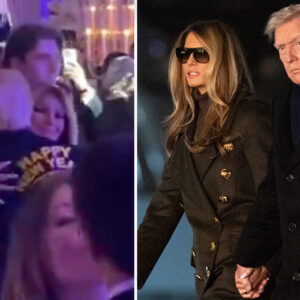In a moment that encapsulated the divided sentiments of our time, a recent NFL game saw contrasting reactions from the spectators in the stands. As the first strains of the “Black National Anthem” – known more formally as “Lift Every Voice and Sing” – echoed throughout the stadium, a chorus of boos ensued. However, these jeers were starkly juxtaposed with the spirited cheers that accompanied the performance of “The Star-Spangled Banner.”
This differential response is a microcosm of the broader national conversation – a discourse torn between understanding the historical significance of both anthems and the associated sentiments they elicit.
“Lift Every Voice and Sing,” written by James Weldon Johnson in 1900, holds immense significance for the Black community. Originally penned as a poem, it was later set to music by Johnson’s brother, John Rosamond Johnson. Over time, it has emerged as an anthem that reflects the resilience, hope, and tenacity of a community that has faced, and continues to endure, systemic challenges.
On the other hand, “The Star-Spangled Banner,” composed by Francis Scott Key during the War of 1812, stands as a symbol of national pride and unity. For many, it’s more than just an anthem; it’s an embodiment of the nation’s history, achievements, and aspirations.
The NFL’s decision to play both anthems, a move intended to demonstrate support for racial equality and inclusivity, has sparked both commendation and criticism. For some, it’s a nod to the league’s diverse player base and a broader acknowledgment of the cultural shift underway in America. For others, it’s seen as unnecessary and divisive.
The reactions from the fans didn’t emerge out of a vacuum. The NFL has been at the center of the political and social debate since 2016, when Colin Kaepernick took a knee during the National Anthem to protest racial injustice. His gesture polarized fans, with some lauding his courage and others condemning what they saw as an act of disrespect.
For the fans booing the Black National Anthem, it might be a feeling of fatigue from what they see as the politicization of their favorite pastime. Sports events, for many, offer an escape from the daily grind, a space where they can rally behind their favorite teams without the baggage of political discourse. Others might see it as an unnecessary addition or even a dilution of the traditional pre-game ceremonies.
Conversely, those cheering for “The Star-Spangled Banner” might be expressing their patriotism, asserting their appreciation for a long-standing tradition, or simply reacting positively to a familiar tune.
The NFL, like many organizations today, is walking a tightrope. On one side, they’re trying to support and acknowledge the genuine concerns of their Black players and fans. On the other side, they’re facing fans who want sports to remain a neutral zone, untouched by societal debates.
However, the idea that sports can exist in a vacuum, separate from societal shifts, might be unrealistic. Athletes have often used their platforms to shine a spotlight on issues, from Muhammad Ali’s stance on Vietnam to the 1968 Olympic Black Power salute.
The contrasting reactions to the two anthems at the NFL game are indicative of a nation grappling with change. It’s a reflection of a society trying to reconcile its past with a vision for a more inclusive future. Whether one supports the playing of both anthems or not, it’s essential to understand the depth of emotions and history attached to each song.
The hope is that, over time, both anthems can be appreciated for the values they represent. And while debates and discussions will persist, one can hope that they occur in a spirit of understanding and mutual respect.





